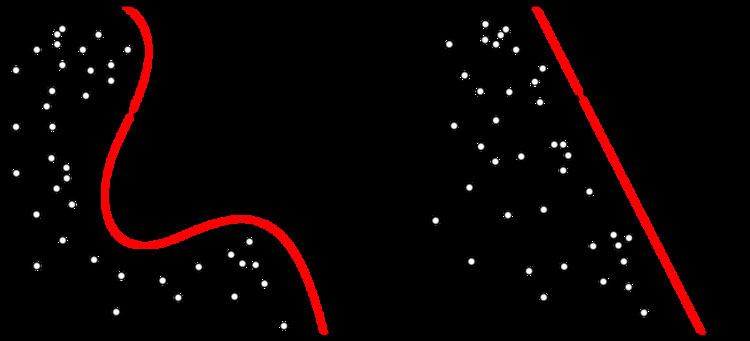 | ||
Fuzzy clustering (also referred to as soft clustering) is a form of clustering in which each data point can belong to more than one cluster.
Contents
- Comparison to Hard Clustering
- Membership
- Fuzzy C means Clustering
- History
- General Description
- Centroid
- Algorithm
- Comparison to K means Clustering
- Related Algorithms
- Applications
- Bioinformatics
- Image Analysis
- Marketing
- References
Clustering or cluster analysis involves assigning data points to clusters (also called buckets, bins, or classes), or homogeneous classes, such that items in the same class or cluster are as similar as possible, while items belonging to different classes are as dissimilar as possible. Clusters are identified via similarity measures. These similarity measures include distance, connectivity, and intensity. Different similarity measures may be chosen based on the data or the application.
Comparison to Hard Clustering
In non-fuzzy clustering (also known as hard clustering), data is divided into distinct clusters, where each data point can only belong to exactly one cluster. In fuzzy clustering, data points can potentially belong to multiple clusters.
Membership
Membership grades are assigned to each of the data points(tags). These membership grades indicate the degree to which data points belong to each cluster. Thus, points on the edge of a cluster, with lower membership grades, may be in the cluster to a lesser degree than points in the center of cluster.
Fuzzy C-means Clustering
One of the most widely used fuzzy clustering algorithms is the Fuzzy C-means clustering (FCM) Algorithm.
History
Fuzzy c-means (FCM) clustering was developed by J.C. Dunn in 1973, and improved by J.C. Bezdek in 1981.
General Description
The fuzzy c-means algorithm is very similar to the k-means algorithm:
Centroid
Any point x has a set of coefficients giving the degree of being in the kth cluster wk(x). With fuzzy c-means, the centroid of a cluster is the mean of all points, weighted by their degree of belonging to the cluster:
Algorithm
The FCM algorithm attempts to partition a finite collection of
Given a finite set of data, the algorithm returns a list of
The FCM aims to minimize an objective function:
where:
Comparison to K-means Clustering
K-means clustering also attempts to minimize the objective function shown above. This method differs from the k-means objective function by the addition of the membership values
Related Algorithms
Using a mixture of Gaussians along with the expectation-maximization algorithm is a more statistically formalized method which includes some of these ideas: partial membership in classes.
Another algorithm closely related to Fuzzy C-Means is Soft K-means.
Applications
Clustering problems have applications in biology, medicine, psychology, economics, and many other disciplines.
Bioinformatics
In the field of bioinformatics, clustering is used for a number of applications. One use is as a pattern recognition technique to analyze gene expression data from microarrays or other technology. In this case, genes with similar expression patterns are grouped into the same cluster, and different clusters display distinct, well-separated patterns of expression. Use of clustering can provide insight into gene function and regulation. Because fuzzy clustering allows genes to belong to more than one cluster, it allows for the identification of genes that are conditionally co-regulated or co-expressed. For example, one gene may be acted on by more than one Transcription factor, and one gene may encode a protein that has more than one function. Thus, fuzzy clustering is more appropriate than hard clustering.
Image Analysis
Fuzzy c-means has been a very important tool for image processing in clustering objects in an image. In the 70's, mathematicians introduced the spatial term into the FCM algorithm to improve the accuracy of clustering under noise. Alternatively, A fuzzy logic model can be described on fuzzy sets that are defined on three components of the HSL color space HSL and HSV; The membership functions aim to describe colors follow the human intuition of color identification.
Marketing
In marketing, customers can be grouped into fuzzy clusters based on their needs, brand choices, psycho-graphic profiles, or other marketing related partitions.
